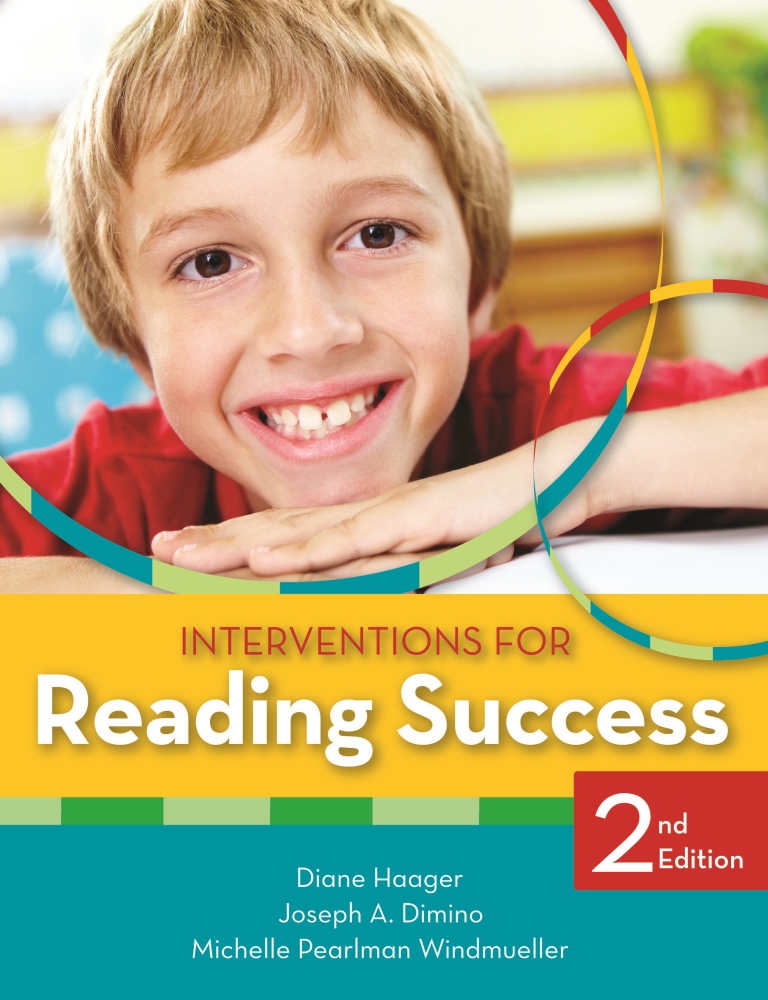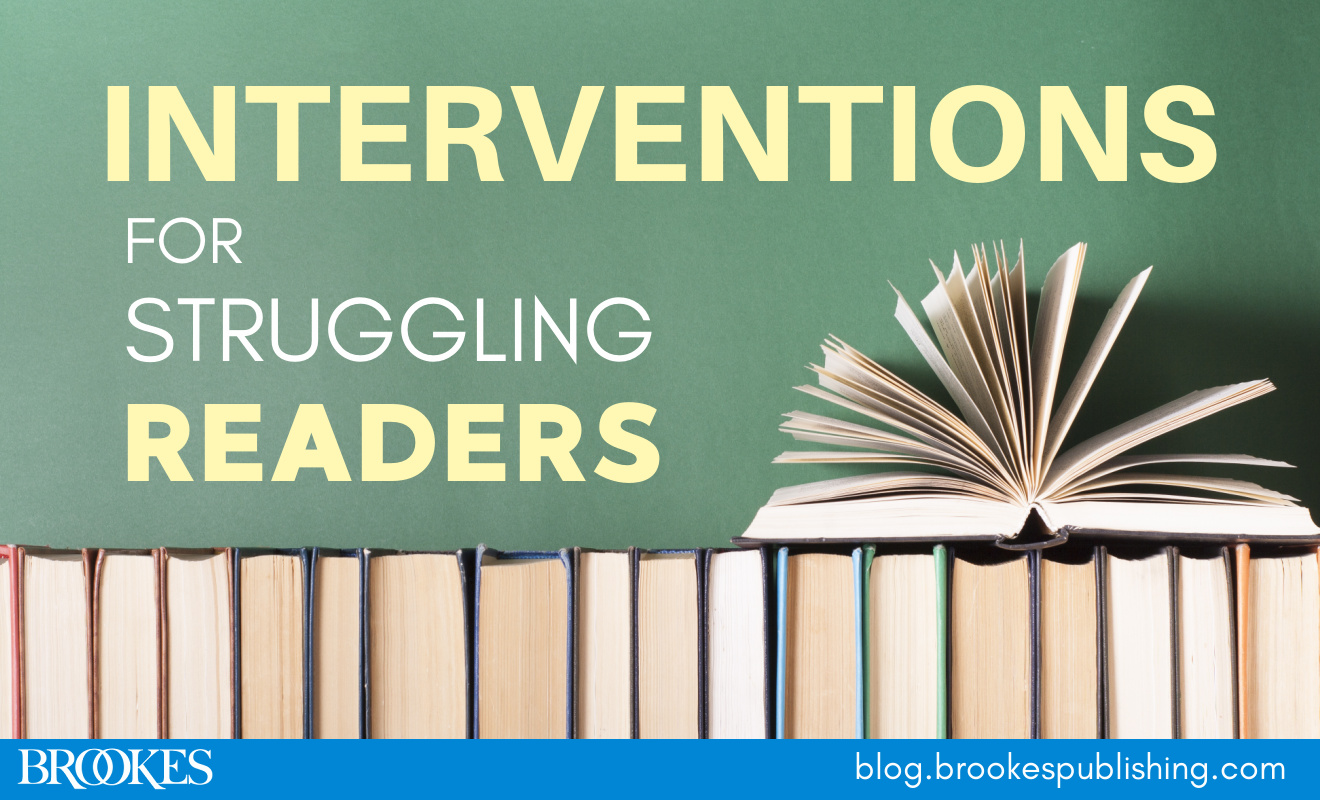For busy teachers, finding time to provide extra support for struggling readers can be a challenge. But with some advance planning and time management strategies, you can fit effective reading interventions for struggling students into your class period and keep other students productively engaged at the same time.
 In the book Interventions for Reading Success, authors Diane Haager, Joseph Dimino, & Michelle Pearlman Windmueller share answers to some commonly asked questions about balancing the needs of all students during literacy instruction. Today’s post takes you through six of these answers and offers some practical tips and examples you can try in your own classroom.
In the book Interventions for Reading Success, authors Diane Haager, Joseph Dimino, & Michelle Pearlman Windmueller share answers to some commonly asked questions about balancing the needs of all students during literacy instruction. Today’s post takes you through six of these answers and offers some practical tips and examples you can try in your own classroom.
What should the other students do while I’m working with my intervention group?
Setting up literacy centers in your classroom is an effective way to manage students’ independent work time. Here are some tips to try:
• Create a few permanent centers, such as listening, writing, computer, and library.
• Also create dynamic centers that will change from week to week. These might include a word-making center, a game center, and individual intervention kits for each student.
• Adjust the dynamic centers weekly, so that the letters, words, and/or books change with students’ weekly progress and skill mastery.
• Manage student traffic at each center by having students complete a check-off card at each one. Once students have checked off their name, they must choose a different center to visit.
• Offer students a sticker or stamp at the end of the week if they have visited all the centers
How do I teach students to use each center?
Begin your week by introducing the students to one center. Teach the rules of the center, the actual academic skills needed for this center, and how to use the materials; then have individual students demonstrate how to do the activities and ask the class what questions they have. If there are multiple activities within a center, try introducing only a few activities at a time to ensure that students have mastered them and then slowly introduce more activities over time. If the center has only one main focus, such as a listening center, then introduce that center and go on to a new center the next day. When students have four to five activities to choose from, vary the activities as needed each week or every other week.
Here’s an example of how one teacher introduced centers in her classroom during one week:
Monday: Listening center
Here, students to listen to audiobooks to hear models of fluent reading. Students must learn:
• how to use the equipment
• how to find and put away the books and tapes
• behavior rules
• how to record what they have done each day on a simple checklist
Tuesday: Writing center
The writing center has all the materials necessary for students to independently work. Directions are posted, with an example of the step-by-step procedures for the writing process. Students must learn:
• how to use the materials that are clearly labeled in the center
• behavior rules
• how to use a writing folder
• how to record what students have done each day on a simple checklist
Wednesday: Fluency center
Here, students practice fluency activities using words and materials posted throughout the room and in a specific place in the classroom. Students must learn:
• how to work with a partner in timing fluency exercises
• how to record fluency scores on a fluency graph
• how to use the word wall and/or sight word cards for fluency practice
• how to record activities on a simple checklist
Thursday: Word games center
The word games center is stocked with word puzzles and games that allow students to practice decoding concepts taught in class. You might also include lists of decodable words to use in pairs with a timer. Students can work in pairs or individually. Students must learn:
• how to play the games or do the puzzles
• rules for playing games and maintaining order in the center
• how to clean up materials
• how to record activities on a simple checklist
How do I organize my time to fit intervention into my reading period?
Intervention is a necessary element of any reading program. Here’s a quick look at a day in the life of one teacher who skillfully fits intervention into her daily schedule.
Morning:
When students enter the classroom, Ms. Shaw begins the day with one of the fluency activities. This focuses the entire class on beginning the day with a quick intervention activity, such as One Minute, Please! or Echo Reading.
Before recess:
The time between the start of school and recess is typically spent in a reading block. Structured intervention is usually part of this time unless it is scheduled for after recess or after lunchtime.
After recess:
Ms. Shaw usually conducts her math lessons after recess. When students are working independently on their follow-up assignment, she pulls a student or two aside for 5-10 minutes and gives them extra help in reading intervention.
After lunch:
Students come in from lunch and have sustained silent reading for about 10 minutes. Ms. Shaw pulls a few more students to conduct 10 minutes of reading intervention at this time. She typically works with the students who have difficulty reading alone, focusing on needed early reading intervention activities.
End of day and after school:
While the homework monitors are distributing the day’s homework assignment and students are readying themselves to go home, Ms. Shaw pulls a few students aside to read words from the word wall. Ms. Shaw has said that any spare minute is filled with reading intervention activities. There are a few students who always have permission to stay after school. Ms. Shaw works with those students on 10 more minutes of reading intervention.
How do I teach all students to work independently during intervention time?
Preparing students in advance and clarifying expectations are the keys to encouraging more independent work during your class period. Try these tips:
• Give a clear and simple introduction to all activities that students will be working on during the intervention period.
• Ahead of time, tell your students the rules for how to get help if they find themselves stuck. You might want to post the rules in a highly visible place in your classroom.
• Make it clear that students may not interrupt you while you work with an intervention group.
• Use simulation—have students practice rotating through the activity centers and pretend to work at completing a task so that they know what expectations are.
• Reinforce on-task behavior whenever you see it.
How do I ease transitions between intervention activities?
Using music cues is a great way to make transitions easy and fun. Try asking your students to recite the words to a song or rhyme while they walk to their next station, and tell them they need to be in their seats by the time they finish the rhyme. Or play some music on your phone or tablet as your students move from one station to the next, and tell them that by the time the music stops, they need to be in their new seat for the next activity.
How do I conduct intervention when my students are working at different levels?
Reading instruction is not a one-size-fits-all model. Since all students will not be working at the same level even within a smaller group, explore ways to differentiate instruction. For example, if you assign a spelling task to a group of five students who are receiving intervention, there may be two in the group who need the assignment modified even further. You might instruct these two students to write only five words instead of eight words. When you assign partner work in reading fluency, one student may be reading a passage slightly below grade level, whereas another student may be practicing high-frequency words. Having students work at their own level will help minimize behavior problems and ensures that each student is receiving appropriate intervention work.
If you’re a reading teacher, what strategies have you used to meet the needs of struggling learners while keeping the whole class engaged? Add your thoughts in the comments below, and for more guidance and activities that help support struggling readers, get the book behind today’s blog post!

GET THE BOOK
Interventions for Reading Success, Second Edition
By Diane Haager, Ph.D., Joseph A. Dimino, Ph.D., & Michelle Pearlman Windmueller, Ph.D.
Help transform struggling K–3 students into skillful readers—in just 20 to 30 minutes a day! This curriculum supplement is your key to helping all students grasp the five Big Ideas of early literacy: phonological awareness, the alphabetic principle, fluency, vocabulary, and comprehension. You’ll get more than 130 research-based, teacher-tested activities you can use with any core reading program to help struggling students meet grade level standards.
Note: A different version of this article appeared in the Brookes K-12 Education newsletter. Sign up for it today if you haven’t already!
Stay up to date on the latest posts, news, strategies, and more!
Sign up for one of our FREE newslettersMore posts like this

Teaching Struggling Readers: 8 Steps to Effective Instruction
March 5, 2019
5 Mistakes in Reading Program Design that Can Hurt Struggling Readers
November 21, 2018


Write a Comment
Your email address will not be published. Required fields are marked *
Post a Comment